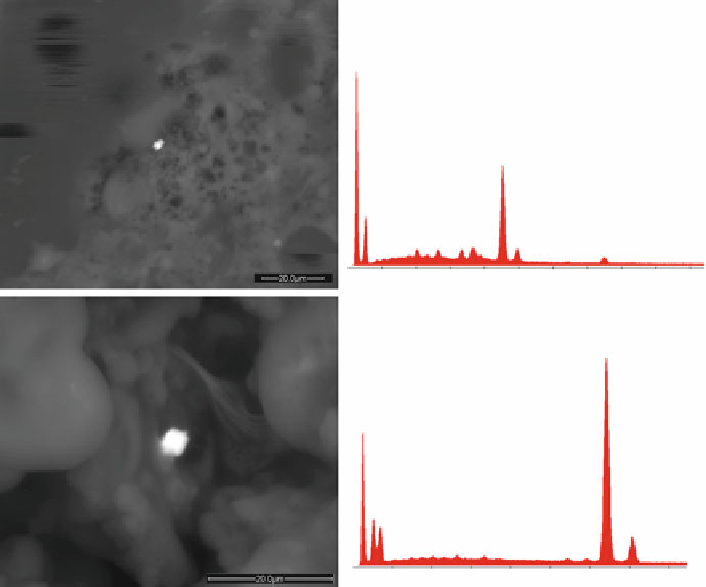Environmental Engineering Reference
In-Depth Information
a
b
C
Ti
O
Sb
P
CI
K
Ni
1.00
2.00
3.00
4.00
5.00
6.00
7.00
8.00
9.00 10.00
c
d
Fe
C
O
Fe
Mn
CI
Cr
1.00
2.00
3.00
4.00
5.00
6.00
7.00
8.00
Fig. 10.2 SEM images of inorganic debris identified in an industrial cake for children. The
metallic particulate matter it contains (Titanium, Nickel, and Antimony (b) and (d) stainless
steel: Iron, Chromium and Nickel) is probably related to the industrial preparation process
10.4 Fatty and Oily Samples
In some cases, like yogurt or ketchup, the sample can be smeared in a thin layer
directly on the Carbon disc with a plastic spatula not to run the risk of introducing
metal pollutants coming from a metal tool.
To analyze pasty and semisolid fatty and oily specimens, the particles, dispersed
inside the matrix as they are, must be put in a condition to be seen (Figs.
10.4
,
10.5
,
10.6
,
10.7
, and
10.8
). In some circumstances we must filter the sample and analyze
the filter after dehydration (Millipore, pore: 0.45
m, White Gridded HAWG,
diameter 25 mm (No. HAWG02500, Lot No. H6AN39726).
To do that, in a number of cases (e.g., chocolate (Fig.
10.4
), butter, etc.) the
specimens must be heated. It may happen that a thin, fatty layer clogs the filter and
even trying to force somewhat the filtration with a vacuum pump may prove
useless. This, for example, is the case with whole milk. So, it is the supernatant
layer that, after having been left to desiccate at 40
C for an hour, is set on the
Carbon disc and observed. That is also the case of mortadella (a type of Italian
μ

